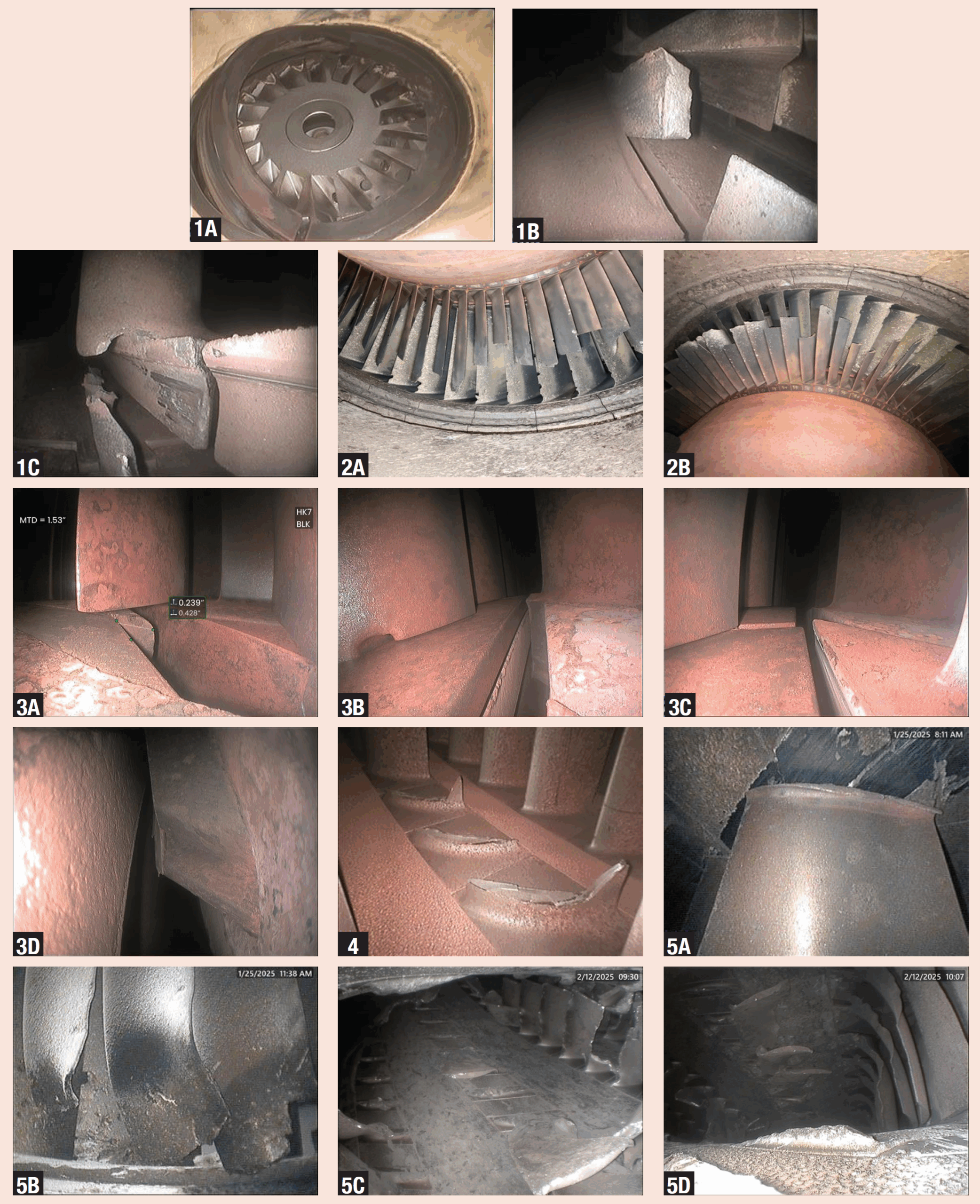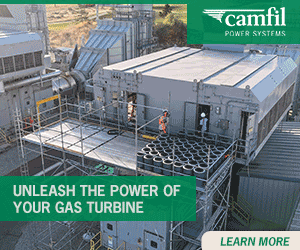With all the sophisticated gas-turbine inspection technologies available today—including ultrasonic, eddy current array, and phased-array ultrasonic—one might think the borescope had lost a step in status.
Nothing could be further from the truth.
Borescope capabilities have improved dramatically over time and they put your eyes right into the guts of critical plant equipment—to warn of existing and impending problems. Mike Hoogsteden, director of field services for Advanced Turbine Support LLC, drove home this point during a recent CCJ interview.
Periodic inspections are highly recommended, he said, because they allow owner/operators to chart gas-turbine condition over time and to identify damage caused by rubs, foreign objects in the gas stream, corrosion pitting, deposits, cracks, coating loss, and component wear, movement, or loss.
Having this information prior to an outage is a big help in planning, budgeting, and scheduling. Plus, some users are using the results of borescope inspections to make condition-based maintenance decisions and dispense with the traditional hours/starts-based paradigm.
Most facility managers would agree that an annual inspection is “table stakes” in the plant reliability game. Hoogsteden’s not so sure. That might have been the norm a few years ago, he says. Today, he’s inclined to suggest two inspections yearly because of what he calls recent “unusual significant findings” (Sidebar). One inspection would be a “deep dive,” the other a “look/see.” Think of your dentist here: One semi-annual visit for a cleaning and visual check; the other for x-rays and dental work.
An experienced borescope team, Hoogsteden continued, has a solid value proposition in troubleshooting. It often can identify the cause or causes of such things as high vibration, deviations in exhaust-temperature spread, NOx compliance issues, and unit trips.
Experience is one of Advanced Turbine Support’s defining characteristics and why it is widely considered one of the industry’s top inspection companies. Powerplant veterans may recall that Rod Shidler and Rick Ginder founded the company 25 years ago (2001) and continue to serve on the front line.
Over the years, the firm’s team of more than 20 inspectors has gained the intimate knowledge of the various gas-turbine models—frames and aeros—required to find and characterize problems. Sticking a borescope in a unit and finding blades missing after a catastrophic failure is easy. Locating the failure initiation sites and identifying the symptoms that led to the failure is much more difficult.
Tom Christiansen, senior VP, Strategic Power Systems, supported Hoogsteden’s assessment of today’s equipment challenges in a recent industry presentation. SPS has been gathering powerplant operating data for four decades and well respected for the accuracy of its information.
One of the key themes of Christensen’s talk was the increasing demands placed on existing power infrastructure. Over the past decade, he said, powerplants have been required to operate for longer hours because of the increased demand for electric power, delays in new plant construction, and market fluctuations that encourage the maximization of existing assets.
In many cases, Christensen noted, annual operating hours per plant have increased by 20% to 50%, pushing some facilities beyond their original service requirements. This has accelerated the wear and tear on critical components, leading to an increase in forced outages and unplanned maintenance.
Christensen identified several factors contributing to these disruptions, including aging infrastructure, regulatory uncertainty, supply-chain issues, and extreme weather events. He particularly highlighted the growing frequency of transformer failures, turbine malfunctions, and control system breakdowns, which can take months to repair if replacement parts are not readily available.
One of the most pressing concerns he raised was the rising cost and duration of forced outages. Traditionally, maintenance schedules were carefully planned to minimize downtime, but recent industry shifts have made it increasingly difficult to adhere to these schedules. As a result, many powerplants are experiencing prolonged outages—months in some cases—significantly impacting grid reliability and operational costs.
Plant reliability is everyone’s concern. It behooves plant personnel to learn as much as possible about their equipment when an inspection team is onsite. An important step in this effort is to review beforehand the OEM’s advisories pertaining to the borescope inspections that will be conducted. The list of Technical Information Letters (TILS) for GE 7FA machines that follows may be of help to some readers. It was compiled by colleagues at a major utility and presented at an industry meeting several months ago.
- Inlet section (inlet door)
- 1794, Water wash nozzle pins
- 2049-R2, IGV rubbing
- 1068-R3, IGV bushing migration
- 1509-R4, R0, S0, and R1 inspection
- 1796-R1, R0 blade staking
- 1870-R2, Blade staking
- 1562, Shim migration
- Compressor plugs
- 1769, Aft stator rock
- 1502-R1, Aft compressor rubs
- 2286, S5 vane inspection
- 1850-R2, S17 stator bushing
- Lift oil
- 1582-R2, Lift-oil hose inspection
- Combustor (upper manway)
- 1850-R2, S17 stator bushing
- 2423, TP hardware
- 2302, R1 nozzle bolting
- Combustion
- 1724-R1, Quaternary fuel annulus
- Turbine plugs
- 1182-R1, Bucket inspection
- 2377, R1 damper pin
- 1108-R1, R1 turbine nozzle
- 1858, R2 bucket inspection
- 1859, R2 bucket inspection
- Exhaust door
- 2343, Exhaust baffle seal
Unusual significant findings
Advanced Turbine Support’s Mike Hoogsteden, director of field services, shared some examples of what he considers “unusual significant findings” identified during recent borescope inspections of GE gas-turbine Frames 5, 6B, 7EA, and 7FA running harder and cycling more frequently because of changes in power-market dynamics.
1. Separated fuel nozzle in 7EA photo A is something that had not been seen previously by an Advanced Turbine Support inspector. Photos 7EA B and C show disengaged and protruding S2 knife seals contacting S2B. In B, the seal is behind the trailing edge of the second-stage; in C, the seal and bucket are in contact
2. Damage here resulted from the failure of a 7FA third-stage bucket. The fix was believed to require a hot-gas-path inspection at a minimum
3. Series of photos shows R17 migration in a 7FA
4. There were seven S17 liberations in this Frame 6B
5. Rotor dropped in this Frame 5 causing extensive compressor damage. A bearing failure was the assumed cause early in the investigation. Photos 5C and 5D, show the large number of seventh-stage stator vanes and rotor blades, respectively, lost in the accident






